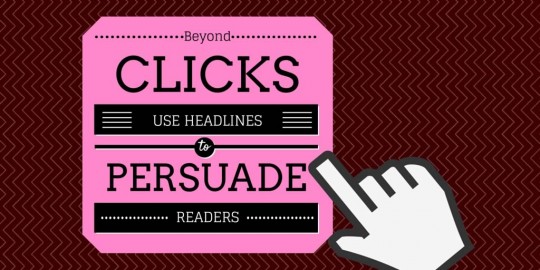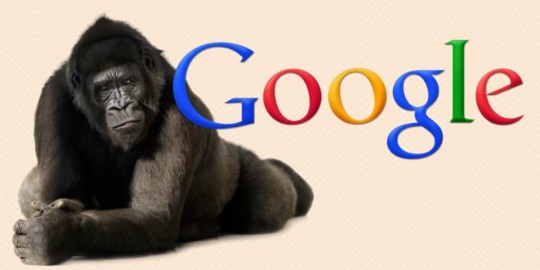Beyond Clicks: Headlines That Persuade
 In the days when articles were on physical paper, headlines appeared in large type directly above the content. They were written to capture the essence of the story and, frequently, amuse with clever wordplay. While a newspaper’s main headline was written, in part, to sell copies, article headlines served to get you to read, or start reading, the article.
In the days when articles were on physical paper, headlines appeared in large type directly above the content. They were written to capture the essence of the story and, frequently, amuse with clever wordplay. While a newspaper’s main headline was written, in part, to sell copies, article headlines served to get you to read, or start reading, the article.
That aspect of headline writing hasn’t changed much in the digital world. According to Copyblogger, four times as many visitors read the headline as read the article content. So, enticing the reader into the article itself remains as much a goal today as it was a century ago.
The One Weird Metric That Makes Headlines Winners Today
Today, of course, headlines are mostly digital. They appear not just at the top of articles, but in news feeds, emails, content widgets, and many other places. And, for better or worse, they are judged mostly by one metric: clicks.
Indeed, many sites (including, at times, this one) use software to pit competing headlines for the same story against each other in a Darwinian struggle. Only the most clickable headline survives. The only thing that reins in ever-crazier clickbait headlines is the knowledge that if the article fails to deliver on the promise of the headline, the short-term boost in traffic may be followed by a longer-term decline for the entire site.
The financial and traffic woes of the venerable New York Times website have been blamed, in part, on lackluster headlines that might have worked in print but don’t draw clicks in today’s attention-challenged digital world. Their Innovation Report suggests adoption of A/B testing and similar practices is necessary to compete with fast-moving, digital-savvy rivals.
So, we can expect to see ever more headlines like, “27 Crazy Ways to…,” “The Weird Trick That…,” and “What Darth Vader Can Teach You…”

One site that has mastered the art of the clickable and shareable headline is Upworthy. Their headlines follow several formulas, but visitors never seem to tire of them.
The focus on clickable headlines has negative aspects, of course. There’s a temptation to push for ever more sensational teasers, inevitably creating reader dissatisfaction with the content. And, a site’s content quality can be degraded if every article idea has to pass through a “clickable and/or viral” filter.
The Invisible Gorilla: Google
As if creating headlines that drive mindless clicks isn’t enough, headline writers have another factor to contend with: Google and the need for SEO-friendly headlines. Google is a major traffic source for most content sites, and keywords in the headline are major factors in how well an article ranks. The clever puns of print headline writers are awful for SEO, and Huffington Post-style clickbait titles are usually far from optimized for search.

There’s a software solution to this problem, too. Most content platforms, either directly or by plugin, let writers and editors create an alternate page title tag visible mainly to search engines. The “SEO Title,” as it is often called, doesn’t have to match the headline on the visible page, is used as a ranking factory by search engines and is usually the text for the clickable link in the search results. (See Blog Headline Writing Lessons from Mega-traffic Sites.)
The SEO title has its own built-in tension. The text has to satisfy the algorithmic requirements to maximize its search ranking but, since it usually becomes the linked text in the search results, it also has to entice searchers to click it. Still, if someone searches Google for a phrase, an article with that phrase featured prominently in the title is more likely to draw traffic than a clickbait-style title.
But Wait, Science Says There’s More?
At this point, headline writing sounds like a difficult balancing act. Is it possible to create a headline that is clever and literate, draws clicks like crazy, and that even Google can love?
In fact, beyond attracting clicks and search engines, headlines have another superpower. They change what people conclude from the content, what they remember, and even how they behave.
A new study, to be published in The Journal of Experimental Psychology: Applied, conducted a series of experiments that paired different headlines with the same content. Some headlines contradicted the content, while others were skewed in smaller ways.
When the subjects were asked questions about the content and their own beliefs, the data showed that the headline affected what they remembered and even what they believed about the topic.
While the headlines that were grossly inaccurate had little effect on the readers’ beliefs, headlines that skewed their emphasis toward one viewpoint did, in fact, significantly affect outcomes. For example, a headline that emphasized the risks of genetically modified foods caused readers to estimate higher public health costs compared to readers who saw a different headline.
The opinions readers formed of people in images associated with an article were also shifted by headline content.
Journalists won’t be surprised by this. Since the early days of opinionated journalism, writers and editors have created headlines that supported the point of view they or their publication espoused. Compare how liberal and conservative newspapers report the same story and you’ll often see headlines intended to shift the reader’s view in one direction or the other.
But what does this mean for businesses and content marketers? A biased headline that doesn’t represent the content well is hardly a winning strategy.
I think the key takeaway is that the visible headline is one key element in getting your most important point across to your audience.
In a few words, you can’t lay out an entire argument. But, if your article describes how easy a product is to use, or how much money it can save, mentioning “easy” or “savings” in the headline will make that aspect more memorable and persuasive.
Real-world Headline Strategies

It seems that the headline has to be a sort of Swiss Army knife. It has to get clicks. It has to drive organic search traffic. It has to get people who see the article to read it. And, now, it seems, the headline has to help the reader remember your key point. This is a tall order for 65 characters or so, which is what many experts recommend for a title to avoid being cut off in search results. Here are a few things you can do to get the most out of your headlines:
1) Use different headlines for different purposes. As noted above, you can use plugins or other means to create a different “SEO Title” (actually the HTML Title tag). That lets you craft your separate on-page headline without as much concern for length or other SEO characteristics.
Depending on the tools you use, you can also create a separate headline for social sharing or for distribution to your email list. These can be focused on driving clicks.
2) Pick your battles. Depending on your website and business model, you may not have to focus on every possible headline role.
Upworthy, for example, focuses primarily on viral sharing through social media. Their headlines aren’t meant to be persuasive, and they aren’t designed to make Google happy. These headlines are almost always far too long, and get truncated by Google into a snippet that isn’t particularly enticing. Limiting the role of the headline lets Upworthy editors focus on creating very long, intriguing, headlines that will drive clicks both on their site and when shared on Facebook.
3) Emphasize your key point. This is where the new research comes into play. If you are writing articles to inform your readers, be sure the important takeaway is referenced in the headline.
If you are writing to persuade or sell, use the headline to support your effort. This can actually change what your reader takes away and believes. If you are writing a case study, for example, putting “saved 31%” in the headline will help readers remember that your product saves money.
How do you juggle competing headline priorities? Share your insights in a comment.

Dear Roger,
Thought of you when I saw this
Here’s an interesting link on the effect of color in ads.
Ads communicate message in as little as tenth of a second, helped by color
http://www.sciencedaily.com/releases/2014/12/141210131344.htm?utm_source=feedburner&utm_medium=email&utm_campaign=Feed%3A+sciencedaily%2Ftop_news%2Ftop_health+%28ScienceDaily%3A+Top+Health+News%29
Best wishes,
Joey
Roger,
Thanks for this article. I find that headlines are often the most difficult, but most important tasks in content generation. And thank you for writing a complete, informative, and useful article. So many blogs are simply pushing out witless banter on a subject, but your blog is deep and thoughtful.
Thanks again,
Mark
Finally something new about Headlines. Nice article!
The biggest question I ask myself is “What is my customer afraid of losing”? As explained in “Brainfluence”, human beings are prone to risk aversion (vs. gains).
With the birth of the internet, FOMO (fear of missing out) is having a stronger influence than ever.
Thus, loss (Amazon’s tactic of having a few items left to increase conversion) works wonderfully compared to advertising gains.
You can’t paint with the same brush, but overall I feel utilizing loss tactics really helps. More importantly, tapping into System 1 thinking and leveraging the amygdala, it helps to get people into fight or flight, short and quick decision making actions.
Loved the article Roger!
Great points, Omar, and thanks!